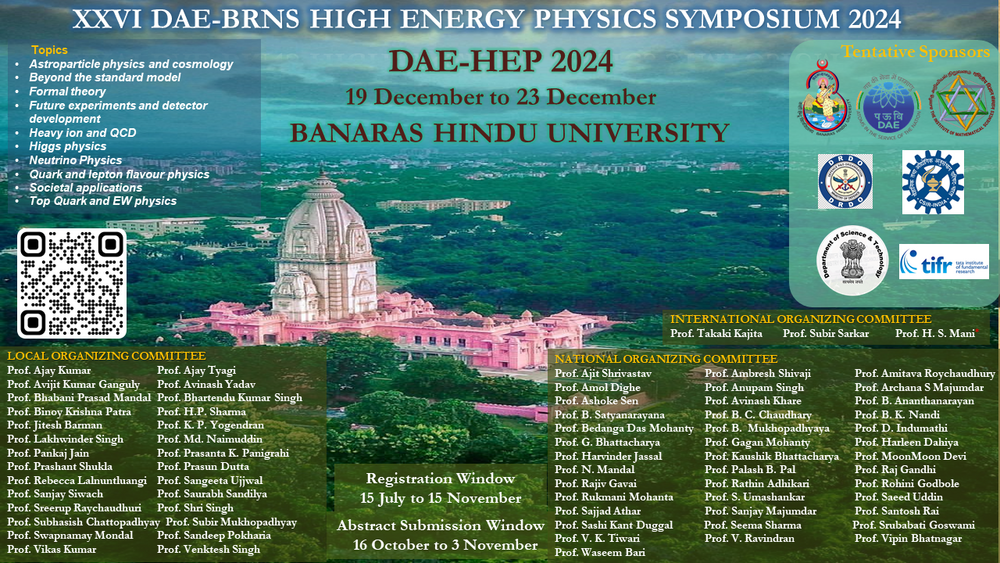Speaker
Description
This paper explores the production and detection of secondary particle showers produced by cosmic muons interacting with a lead absorber in a triangular scintillator detector setup. We used the GEANT4 simulation framework to model three scintillator detectors arranged to capture secondary particles produced by muons traversing a layer of lead. The configuration of the detector consists of arranging two parallel scintillator plates side by side (B and C) below a lead absorber. There is, finally, a third scintillator plate (A) which is placed above the layer of lead. This arrangement has the potential of counting primary muons, together with the secondary particles (gamma rays and electrons) which would be produced from interactions of muons with lead. We employed the Cosmic-ray Shower Library (CRY) as particle source and the FTFP_BERT physics list to simulate accurately the complex interactions and showers in the detector system.
During the simulation run, we processed a total of 129,600 muons (equivalent to an exposure of one week) to study the generation of secondary particles by varying lead thicknesses and how the detector responds. The detector coincidence mode was set at ABC, recording a count only when all three detectors fired simultaneously. Such a criterion ensures counting of only those events which had secondary particle production to trigger all detectors. The results indicated that with initial increase in lead absorber thickness, count rate increased due to more frequent generation of secondary showers. However, beyond a certain lead thickness, the count rate began to decrease. This decrease can be explained by noting the fact that at those greater thicknesses, the lead layer absorbed a larger number of secondaries before they could reach detectors, thus leading to fewer coincidence detections. Such threshold thickness values corresponding to other available absorber materials have been identified for possible experimental validation.
This preliminary analysis of the numerical simulations shows the promise of the proposed detector configuration to effectively observe secondary showers resulting from interaction of cosmic ray muons with intervening media. These results can be useful for further experiments involving different materials of varying thicknesses.

